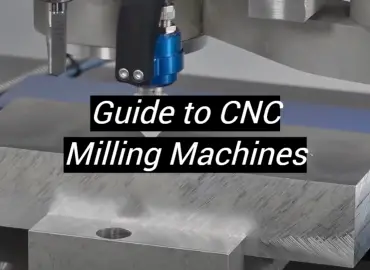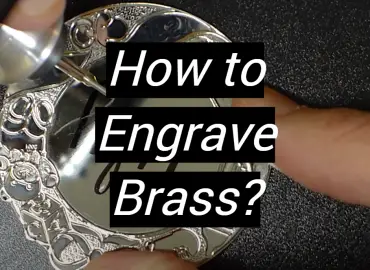Can a circular saw cut metal? This is a question that many people ask, and the answer is not always straightforward. In this comprehensive article, we will answer common questions about using a circular saw to cut metal and provide helpful tips on whether or not it is possible to do this type of cutting. So, whether you are an experienced contractor or just starting out in the world of DIY projects, read on for all the information you need to know about using a circular saw to cut metal!
What Type Of Blade Should You Use?
The type of blade you use is important when trying to cut metal with a circular saw. You want to make sure that you are using a blade that is designed for cutting metal.
These blades are made out of a hard material, such as carbide, and they have a very sharp edge. This allows them to quickly cut through metal without getting dull too quickly.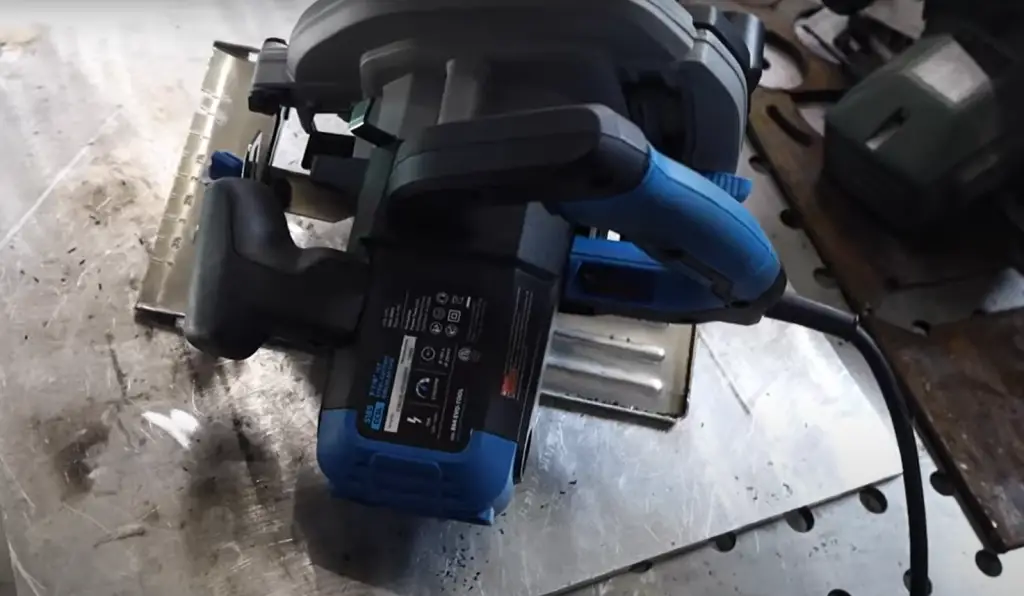
You can find these types of blades at most hardware stores or online. Make sure to read the reviews before purchasing one to ensure that it will work well with your particular model of saw.[1]
Lubricate The Saw Blade For Protection
When cutting through metal, it’s important to lubricate the saw blade to prevent it from overheating. You can do this by spraying WD-40 or another lubricant onto the blade before you start cutting. This will help to keep the blade cool and prevent it from becoming damaged.
Another way to protect your saw blade is to use a circular saw blade designed for cutting metal. These blades are made with special teeth that are designed to cut through metal without overheating.[3]
Use Appropriate Blade Depth
The first thing you need to do is make sure that you’re using the correct blade depth. If the blade is too shallow, it won’t be able to cut through the metal. Conversely, if the blade is too deep, it will overheat and wear out quickly.
Be Mindful Of The Saw And Blade’s Speed
When using a circular saw to cut metal, be mindful of both the speed of the saw and the blade. Cutting metal at too high of a speed can cause the blade to overheat, potentially leading to damage or even breakage. Additionally, it’s important to use a blade that is designed for cutting metal; using a standard wood-cutting blade will quickly dull and may not be able to properly handle the material.
Secure And Position The Workpiece Appropriately
When it comes to cutting metal with a circular saw, it’s important to take the right precautions.
You don’t want it moving around while you’re trying to make a precision cut.If you’re cutting a large piece of metal, it’s best to use a vice or clamp to keep it in place. For smaller pieces, you can use tape or clamps to secure the metal to your work surface. Once your workpiece is secure, position it so that you’ll be able to make the cut safely and accurately.
What You Need To Consider
You might be wondering if a circular saw can cut metal. The answer is yes, but there are a few things you need to take into consideration before using one on metal. In this article, we’ll go over what you need to know about cutting metal with a circular saw.
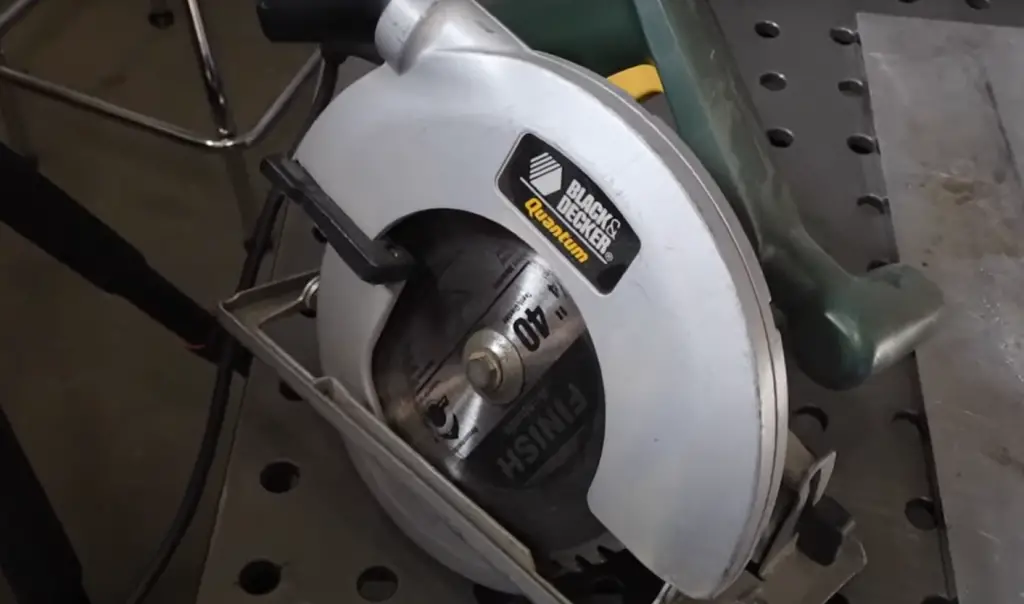
First, let’s talk about the types of circular saws. There are two main types: corded and cordless. Corded circular saws are more powerful and can handle tougher materials like metal. Cordless ones are more convenient because you don’t have to worry about being tethered to a power outlet, but they’re not as powerful.
Next, you need to consider the type of blade you’ll use. There are two main types of blades: carbide-tipped and high-speed steel (HSS). Carbide-tipped blades are more expensive but they stay sharp longer and can handle tougher materials. HSS blades are less expensive but they dull more quickly.[1]
Concerns Related To The Circular Saw
Can a circular saw cut metal? This is a common question with several different answers. It depends on the type of metal, the thickness of the metal, and the type of blade being used. With the right blade, most types of metals can be cut using a circular saw.
There are several concerns that need to be considered when cutting metal with a circular saw. The first is safety. Always wear safety goggles and gloves when using a circular saw. Circular saws can kick up sparks and metal shavings that can cause serious injuries if they come into contact with your eyes or skin.
Another concern is the type of metal you are trying to cut. Softer metals like aluminum can be cut relatively easily with the right blade. Harder metals like steel will require a blade specifically designed for cutting metal.
The thickness of the metal is also important to consider. Thicker metals will require a slower cutting speed and more pressure to cut through. If the metal is too thick, it may be necessary to use a different type of saw altogether.
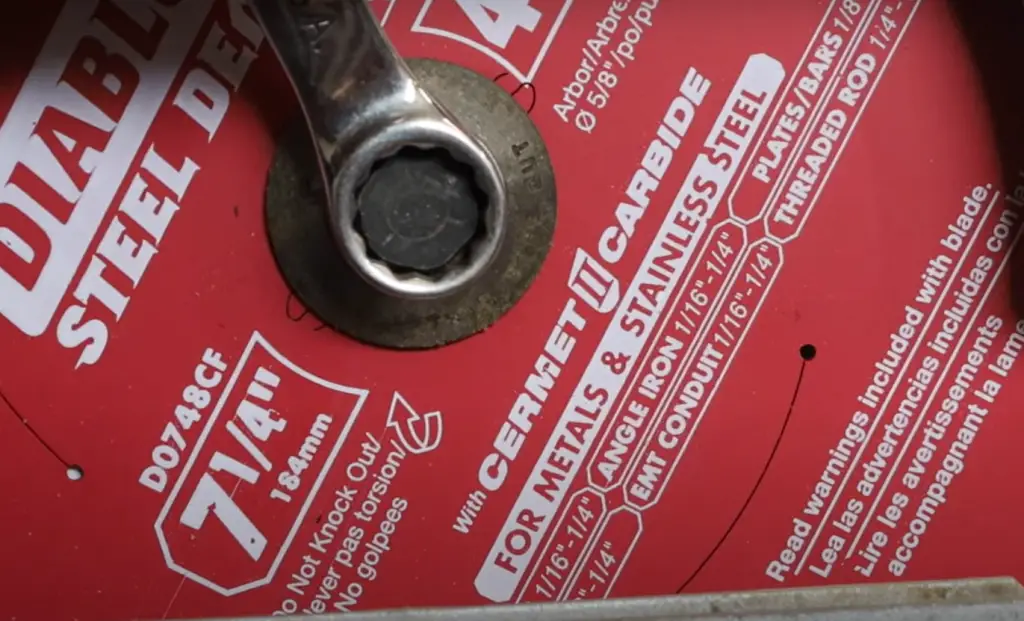
Finally, you need to consider the type of blade you are using. The wrong blade can cause the saw to bind up, overheat, and even break. Make sure you are using a blade that is rated for cutting metal and that is the proper size for your saw.[2]
Essential Safety Tips To Consider
When it comes to working with metal, there are some essential safety tips that you need to keep in mind. Here are a few of the most important things to remember:
- Always wear proper eye and ear protection when using a circular saw on metal. The sparks generated can be very harmful to your eyesight.
- Make sure that the area you’re working in is well-ventilated. The fumes from cutting metal can be dangerous to breathe in.
- Use a respirator mask if possible to avoid inhaling the fumes generated by cutting metal.
- Wear gloves to protect your hands from the sharp edges of metal.
- Keep a fire extinguisher close by in case of an accident.
- Never cut metal near flammable materials such as wood or paper.
- Always disconnect the power to your circular saw before changing the blade.
- Be very careful when handling the blade after it has been used to cut metal. The edges can be extremely sharp and can easily cause injury.[1]
With these safety tips in mind, you’re now ready to learn how to cut metal with a circular saw. Keep reading for some helpful tips on making clean, precise cuts.
FAQ
Can you cut metal with a normal circular saw?
The answer is yes, you can cut metal with a regular circular saw. However, there are a few things to keep in mind before attempting this type of cut.
First and foremost, always use a blade that is specifically designed for cutting metal. These blades have teeth that are much sharper than those on a standard wood-cutting blade, and they’re also usually coated with carbide or another hard material to withstand the heat generated by cutting through metal.
Secondly, make sure the piece of metal you’re attempting to cut is firmly secured before starting the saw. Because metal is much harder than wood, it will require more force to cut through; if the metal isn’t properly secured, it could move during the cut and cause the blade to bind, which could damage the saw or cause injury.
Finally, go slowly and use light pressure when cutting metal with a circular saw. Trying to force the blade through too quickly will only overheat the motor and dull the blade more quickly.
What type of circular saw blade do you need to cut metal?
As we mentioned above, you’ll need to use a blade that is specifically designed for cutting metal. These blades have teeth that are much sharper than those on a standard wood-cutting blade, and they’re also usually coated with carbide or another hard material to withstand the heat generated by cutting through metal.
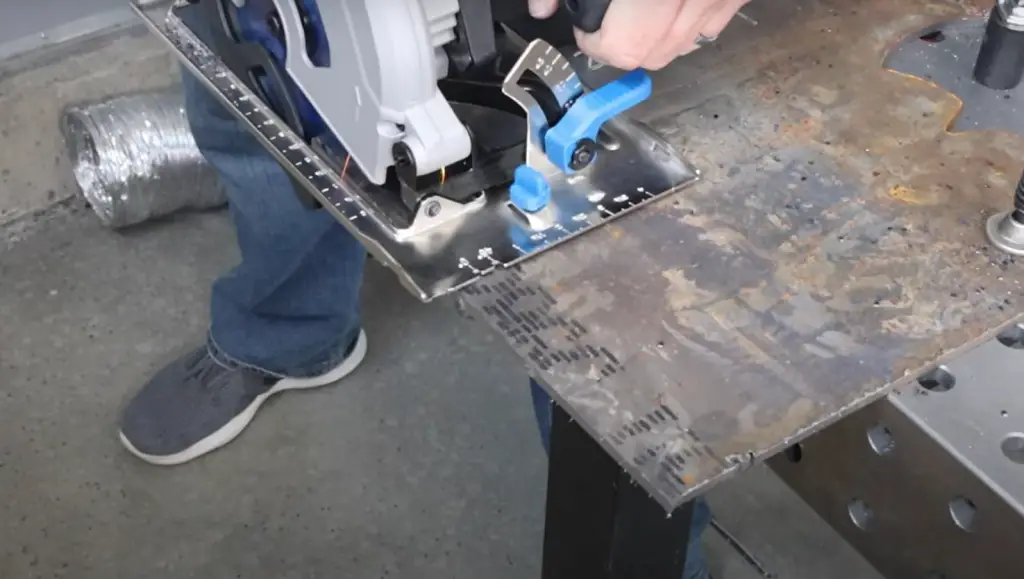
When shopping for a metal-cutting blade, be sure to select one that is the correct size for your saw. Most circular saws can accommodate either a 6″ or 7″ blade, but it’s always best to check the manufacturer’s recommendations to be sure.
Can you put a metal cutting blade on any circular saw?
Most circular saws can accommodate either a 6″ or 7″ metal-cutting blade, but it’s always best to check the manufacturer’s recommendations to be sure.
What saw is best for cutting metal?
Any type of circular saw can be used to cut metal, but some models may be better suited for the task than others. In general, cordless saws are going to be the most convenient option since they don’t require an external power source. However, corded saws tend to have more power and may be a better choice for cutting thicker pieces of metal.
When it comes to choosing a specific model, it’s really a matter of personal preference. We suggest doing some research online and reading reviews from other users before making your final decision.
Can you turn a circular saw blade backwards to cut metal?
No, you should not turn a circular saw blade backwards to cut metal. The teeth on a metal-cutting blade are designed to spin in one direction only, and attempting to use the saw in the reverse direction will damage the blade and could cause injury.
How thick of steel can a circular saw cut?
The thickness of steel that a circular saw can cut will depend on the power of the saw and the size of the blade. In general, however, most saws should be able to handle cutting through pieces of steel that are up to about 1/8″ thick.
Can you cut metal with a Dewalt circular saw?
Yes, you can cut metal with a Dewalt circular saw. Dewalt makes a variety of different models that are all well-suited for cutting through metal, so you’ll just need to choose the one that best meets your needs.
Useful Video: Cutting Steel with Circular Saws | Metal Cutting vs. Standard Sidewinder
Conclusion
So, can a circular saw cut metal? The answer is yes, but there are a few things you need to keep in mind. First, make sure you’re using the right blade. Second, go slowly and use gentle pressure. Lastly, be careful of sparks and flying debris.
Now that you know the answer to the question, “can a circular saw cut metal,” you’re ready to tackle your next project. With these tips in mind, you’ll be able to safely and successfully use your circular saw on metal.
References:
- https://thetoolscout.com/can-a-circular-saw-cut-metal/
- https://fridayrack.com/can-you-cut-metal-with-circular-saw/
- https://www.nccuttingtools.com/circular-saw-7-tips-on-cutting-metal-with-a-circular-saw.html



